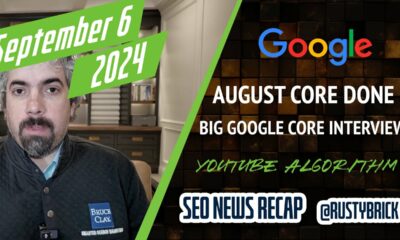Digital experience platform Sitecore has announced the availability of Experience Management Cloud (XM Cloud) representing the transition of its core CMS solution, as well as associated capabilities like personalization, to a modern cloud architecture. XM Cloud combines a headless CMS solution with a WYSIWYG authoring interface suitable for use by marketing or other business teams.
Sitecore is also supporting composability as a new go-to-market strategy, offering distinct parts of its suite as separate modules in recognition of the complexity of today’s digital experience stack.
We spoke to Sitecore’s Chief Product Officer Dave O’Flanagan about the significance of the announcement. O’Flanagan was co-founder and CEO at Boxever, the CDP acquired by Sitecore in 2021.
XP and XM. Key to understanding the transition is the distinction between Sitecore’s Experience Platform (XP) and its CMS (XM). XP is a broad portfolio of digital experience tools, including a customer data platform, analytics, AI and marketing automation. XP is typically purchased by customers as a managed cloud solution. “Think of it as a private cloud solution whereby they get XM and XP and we provide the hosting,” explained O’Flanagan.
“With our evolution we view a world which we want to be fully multi-tenant, fully headless and fully composable. Unfortunately, our previous architecture would not have allowed that.” The answer was to transition the CMS to a modernized architecture as XM Cloud.
Although XP itself hasn’t been transitioned to the new cloud architecture, the CDP acquisition is natively embedded into XM Cloud. “You can personalize in the user interface, you get analytics out of the box, A/B testing, experimentation — all of those are natively available in the same interface you use to create your experience.”
Composability as an option. One advantage for Sitecore customers, he explained, is that the new architecture will allow them to buy components of the DXP rather than the entire platform. “It will allow our customers not to buy the monolithic, fully-integrated solution — which was historically the way DXP vendors sold — but actually allow our customers to buy modular components of our DXP stack in a way that fits how they buy and grow.”
For example, a customer that needs digital asset management (DAM) will be able to buy just that module whereas previously it had been necessary to buy the full DXP. “With our new SaaS approach,” he said, “we are bringing two things to market. One is this composability of modularity… The second thing is that it’s a fully cloud-based, API-first solution so that customers can integrate quite quickly and avail themselves of the value that a cloud solution offers.
Read next: Sitecore integrates CDP, marketing automation features
The importance of integration. “Many vendors of our size and scale tend to go for the full-suite approach,” said O’Flanagan. “We will continue to offer value as a fully integrated suite, but we do acknowledge that it’s a multi-vendor stack out there.” If a customer chooses to use a CDP, for example, or DAM from a vendor other than Sitecore, “we’ll continue to be a friendly neighbor in your stack.”
Room for the business user. A headless CMS can be a daunting proposition for non-enterprise scale businesses lacking teams of developers. Implementing headless can be a notoriously heavy lift. “One of the disruptions with XM Cloud,” said O’Flanagan, “is that we’ve completely rebuilt our visual authoring environment to be natively integrated with headless. Whereas before, headless was a compromise, going more with IT than marketing, we feel we can opt for the flexibility of headless but not compromise on the business user (experience).”
O’Flanagan would not describe this as a hybrid approach. “We’re uncompromisingly headless, in that we’ve decoupled the delivery and the front-end from the back-end. The disruption we’re trying to bring to market is that we don’t think that should be at the expense of the marketer.”
Why we care. Technicalities of cloud architecture aside, we see Sitecore developing a strategy that recognizes the reality of today’s marketing technology stack. As a vendor, of course it wants to provide as comprehensive a solution as possible. But the market is demanding flexibility, demanding indeed that the range of solutions it needs to create digital experiences play well together.
Sitecore is not alone in the space in recognizing these needs. Giants like Salesforce and HubSpot are emphasizing the scale of their app marketplaces rather than attempting to fill every niche themselves. With composability, Sitecore is offering to be a part (an important part, it hopes) of the digital experience stack, but not necessarily the whole stack. And, of course, it has an app marketplace too.
Get the daily newsletter digital marketers rely on.













You must be logged in to post a comment Login